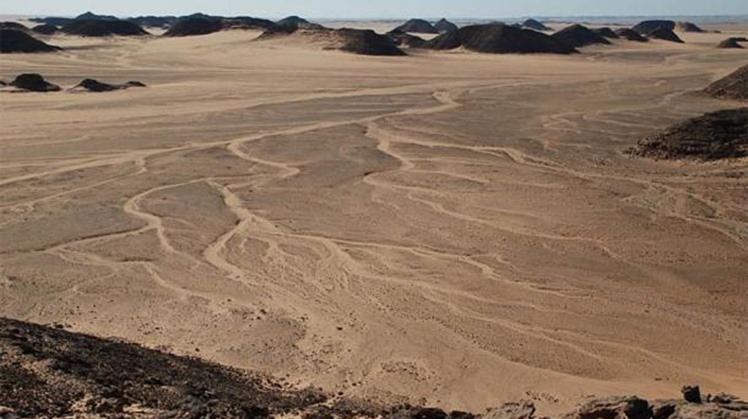The history of ancient Egypt extends over thousands of years, a history of wonders, achievements and secrets of distant times, so for decades, archaeological excavations and discoveries in the field of Egyptology did not cease to amaze scientists and the world, but we rarely stop thinking about pre-family Egypt and the beginnings of a strong civilization, and from Here we wonder where all this came from? And how did the people of the Nile Valley develop into such a surprising and highly advanced civilization?
Long life of pre-dynastic Egypt
The areas adjacent to the fertile Nile valley were always a suitable place for development. To understand the emergence of the nearest Egyptian society before the families, we need to reach back. Some of the first steps of development in the Nile Valley started at an early time of 12 thousand years BC, and it was a primitive stage of early human development characterized by With stone tools of oval and pear shape, this came according to ancient-origins
One of the unique cultures in prehistoric Egypt that developed was the so-called Khormosan Culture, named after the site of Khur Musa, near the famous Egyptian site of Halfa Valley, and this community appeared about 45 thousand years BC, and one thing that is noticeable to the people of this culture is abandonment Slow from the desert areas, and the migration closest to the fertile valleys of the Nile, and they were nomads, follow wild flocks and set up temporary camps in river valleys.
Wadi Halfa is considered one of the oldest sites in prehistoric Egypt, where the oldest structures were discovered - some dating back to 100,000 BC, around this site the later Khormosan culture was established, they were known for their technological progress over time. They mastered the use of stone tools, but they also developed the use of bones and hematite.
It began sometime between 42,000 and 32,000 before the present, and ended around 16,000 B.C., with the gradual emergence of more advanced new cultures, and one of these new cultures that came to be known as the Qadan culture, moved to the Neolithic stage of development between 15,000 and 10,000 BC It is characteristic of many regions and settlements.
The culture of the pre-dynastic leaders had new developments and characteristics that would be crucial to the gradual emergence of the primitive Egyptian identity. They were the first to take some early steps towards appropriate cultivation. Progress, and during thousands of years of its prosperity, the Qadan culture began using pottery and woven baskets and established unique funerary practices that included some early forms of tombs and similar burial sites.
They also developed the machete and grinding stones, gradually new cultures occurred, each new progress and laying a greater foundation towards the eventual emergence of Egyptian civilization.
The formative culture of the Nile Valley was known during the Neolithic period as the culture of Fayoum from about 6000 BC, and the settlements that characterized the Neolithic period began to appear around Egypt, and many scientific studies are based on the emergence of this Neolithic era on migrants from the Fertile Crescent region in the Near East , Who immigrated to Egypt and brought prosperous agriculture with them from about 4400 to 3900 B.C., and the emergence, perhaps even earlier, of the Fayum culture represents a period in which the inhabitants of the region were forced to move due to the continuous expansion of the desert.
This cultural sequence appeared on the northern and northeastern beaches of the ancient lake and the Fayoum region oasis, the inhabitants of its beaches were dependent on fishing and were mostly nomads and moved with seasonal migrations from large wild flocks.
Pre-dynasty Fayoum culture used unique stone tools that showed great shapes, and they began using arrowheads, flint blades and plugs, and archaeological evidence shows us that raw linen was being manufactured, in addition to woven baskets. An interesting aspect of Fayoum culture is the fact It is beginning to live in small groups and extended family groups led by tribal leaders. With this cultural feature, we can witness the emergence of strong leadership societies emerging in Egypt.
Over time, the Fayum culture was replaced by peoples with more advanced techniques such as the Badari culture, which flourished from 4,500 to 4,000 BC, but the first was more advanced. The peoples of this cultural hierarchy lived in the Nile region, so the inhabitants of the Badaria lived in tents made of hides and huts made of reeds, cultivated wheat and barley, collected fruits and herbs, and used castor beans for oil. The bones of domesticated animals were a remarkable archaeological discovery at Badaria sites.
The Badari culture in pre-dynastic Egypt also demonstrated complex funeral practices with the presence of covered oval tombs in which the deceased was buried with many dangerous commodities of ivory and stone, and two large graves were discovered on the edges of the desert on the eastern side of the Nile, and both Fayoum and Badari culture are considered the most advanced In which the future Egyptian civilization developed.
 Tue, Jun. 30, 2020
Tue, Jun. 30, 2020